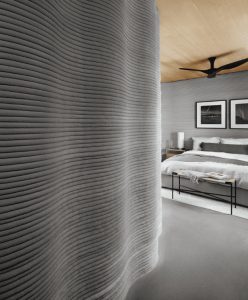"Good Bones" of a Structure (Engineering Perspective)
A fairly frequent question for a prospective homeowner, or an advising agent, is about the “bones” of a home. When someone talks about the “bones” of a house, they are usually focused on primary components of the house (and likely not the cosmetic finish choices). Think of it as a good home that has the potential to be great. So this article is intended to give you an understanding of what “bones” are to an engineer, and how it is comprised of several components (and at times a little more difficult of a question to answer).
- Foundation (Foot Bone)
- Wall Elements (Femur)
When talking about the “bones” of a building, the wall elements are the femur (largest bone in the body, and are essential for standing). The walls are the load resisting system of the building. These transfer the load from the roof system, ceiling and any additional floors to the foundation element. In states like Florida they also resist lateral wind forces, and in California provide diaphragm shear resistance. To ensure your “bones” are good here, you have to consider the materials you are dealing with for the component. The building somewhat talks to you, so you have to look for building distress.
Cementitious stucco lacks the capacity to flex when installed on concrete masonry unit (CMU) block, while wood framing with stucco tends to be more difficult to diagnose. So cracked stucco following the block patter, a typical observation, can be an indication of shifting. Small hairline (1/32-inch and less) are very common and are typically not indicative of a sizable issue, but large width cracks and those that demonstrate lateral offset between the cracked sections can be more concerning. Again, if concerned you should hire an inspector or engineer with experience working with structural settlement. For these experts, timeframe comes into play as well. A small width crack that is highly aged is much less significant than a recently formed crack, that may be progressively worsening. So look for evidence of age to the fractured surface, evidence of paint/patching material within the cracking, or other evidence to help find out the timeframe of occurrences. This is certainly an area where you would go back to the sellers to inquire about the timeframe of painting/patching or distress development. In wood-framed buildings, you look for racking of doors or windows, as cracking patterns in something like stucco may be misleading (especially once water starts infiltrating the cracks and may begin to rust metal lath). If finished with a vinyl, wood or other type of siding, view of the wall movement is similarly obscured. An irregular pattern cracking in a cementitious stucco here likely means shrinkage/thermal cracking and/or water intrusion. Sometimes sounding on the stucco surface may help you determine if the assembly is sound. Water damaged stucco over a wood substrate may give a more hollow sound when tapped.
- Roof/Windows/Paint (Skin)
It’s the largest organ in the body, and I get its not in the “bone” analogy, but this one is important and represents a core function needed to have and maintain “good bones”. The skin protects the bones, could you imagine if it didn’t?! The “skin” of a building would be the building envelope. This is mainly the roof system, the windows, and the paint. Most experts agree that water is the most feared element when it comes to maintaining a structurally sound building, which makes the “skin” the line of defense that keeps the “bones” intact. Take your hand and swipe the paint. Do you see a white chalky residue on your hand? If so, that means the paint has exceeded it’s life expectancy and needs to be redone (make sure you budget for that). Look at the caulked joints of the windows. Are they separating or missing? If so, budget this as well (but this will be included in the painter’s scope if you plan to repaint anyway). Look at the lower corners of windows in the interior. If you hired a home inspector, he/she likely paid close attention to these areas. If you see bubbling paint or visible staining, you may need to have the area tested for leakage. Your inspector’s thermal camera can help determine if this is an active or former leak when tested. The last part, the roof, very commonly gets a ton of attention during a home inspector’s visit. This component can be quite costly and, as an advocate for our clients, must be inspected. Know that all of the materials used to finish the roof have a finite lifespan (see data set for US HERE and for Florida HERE). Preliminary research by you or a hired inspector can reveal the approximate age of the roof covering, based on permit data for most areas. If you cannot find the data, your agent may be able to get information from the sellers or you can gain access to experts that specialize in historic aerial imagery. Of course, your inspector will likely be able to advise you on the condition of the materials.
Summary



2 thoughts on ““Good Bones” of a Structure (Engineering Perspective)”
Pingback: Elementor #1602 - Red Flag Home Inspection
Pingback: Elementor #1644 - Red Flag Home Inspection